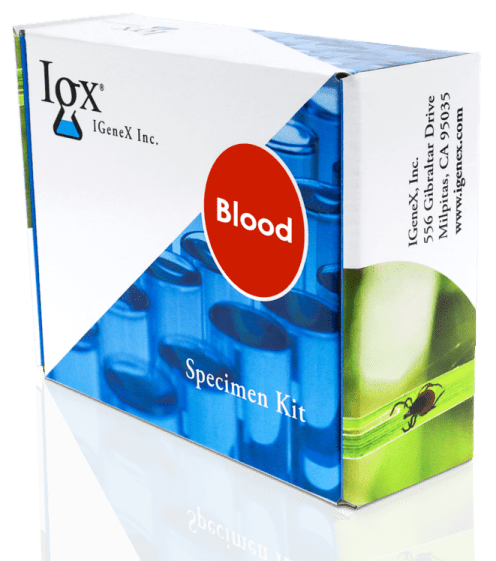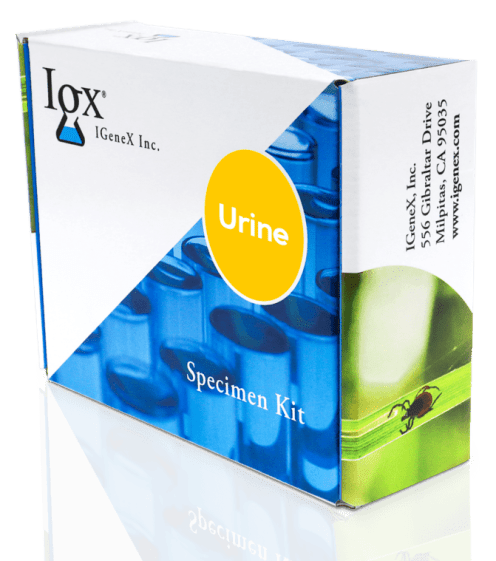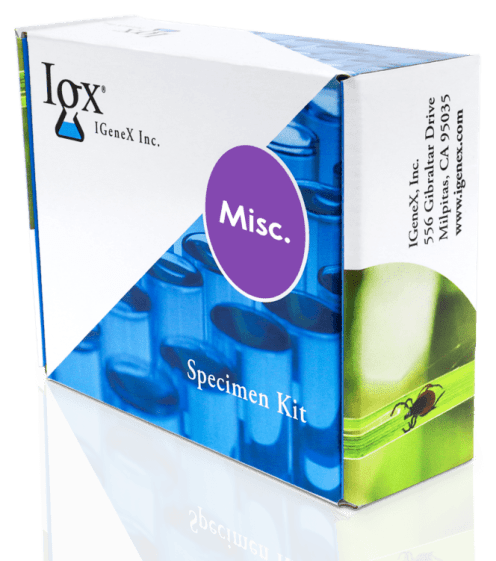Diagnostic Tests for Tick-Borne Relapsing Fever (TBRF)
Tick-Borne Relapsing Fever, or TBRF, is a complex and progressive systemic illness that can be difficult to diagnose due to its similarity to other diseases, including Lyme disease. As a result, laboratory testing is typically required for accurate diagnosis.
TBRF Borrelia can be seen in a Giemsa-stained blood smear only very early on in the disease. IGeneX offers a variety of TBRF Borrelia tests that can aid in the clinical diagnosis of patients at multiple stages of the disease. Keep reading to learn more about each Tick-Borne Relapsing Fever test and determine which test is suitable for your patients.
WHAT TESTS ARE AVAILABLE FOR TBRF BORELLIA?
IGeneX offers ImmunoBlots, PCRs (Polymerase Chain Reaction), Culture Enhanced PCR (cePCR), and Broad Coverage Assays to confirm the diagnosis of Tick-Borne Relapsing Fever.
Tick-Borne Relapsing Fever Broad Coverage Ab Assay
Principle
The TBRF Broad Coverage Antibody (BCA) Assay is a qualitative test designed to detect IgM/IgG antibodies to TBRF Borreliae group-specific antigens in human serum. The BCA Assay is a simple and cost-effective test that gives concise positive or negative results.
Clinical Significance
A positive test suggests exposure to the TBRF Borreliae group, and should be used in conjunction with patient clinical symptoms and history.
Performance Characteristics
The TBRF BCA Assay has a sensitivity of 90% and a specificity of 98%.
Limitations
An ImmunoBlot IgM or IgG test should be ordered for specific protein or band information to provide more information and possible speciation of the Borrelia.
A negative TBRF ImmunoBlot does not exclude the possibility of infection with TBRF Borrelia.
IGeneX interpretation is based on internal validation studies.
The results of this test must be interpreted in relation to patient’s clinical history, epidemiological data, stages of the disease, clinical symptoms or other laboratory results.
Stage of Disease
Early disease / Re-activation later
Tick-Borne Relapsing Fever (TBRF) ImmunoBlot
The Tick-Borne Relapsing Fever (TBRF) ImmunoBlot is a qualitative immunoassay in which antibodies specific to the TBRF Borrelia antigens on a membrane strip are visualized. The ImmunoBlot is more sensitive and specific than the IFA and traditional Western Blot tests, its bands can be read more easily, and it can be used at multiple stages of illness. In early or late stage of the disease when antibody levels are very low, the ImmunoBlot can be positive whereas IFA tests can be negative.
Principle
The TBRF ImmunoBlot assay is based upon an antigen-antibody complex formation in the following steps:
- Binding of anti-TBRF Borrelia specific antibodies in human serum to the ImmunoBlot strip. ImmunoBlot strip is a membrane strip with fixed TBRF Borrelia recombinant antigens on it.
- Binding of enzyme labeled anti-human IgG or IgM antibodies to the human anti–TBRF Borrelia antibodies bound to fixed TBRF Borrelia antigens on the membrane.
- Reaction with BCIP/NBT, a chromogenic substrate with bound antibodies on the strip. A dark purple colored precipitate (band) develops on the antigen-antibody complexes.
Stage of Disease
Early disease / Re-activation later
Tick-Borne Relapsing Fever (TBRF) ImmunoBlot IgM
The ImmunoBlot can detect IgM (early disease) and IgG (late disease) antibodies. The ImmunoBlot IgM test is for the early stages of TBRF and can be positive as early as two weeks after exposure. IgM antibodies can remain positive for a very long time in some patients.
Reference Range
Negative <2 bands present on the blot
Clinical Significance
The TBRF ImmunoBlot IgM is a very sensitive indicator of exposure to TBRF Borrelia. It may be positive as early as two weeks after a tick bite, and will usually remain positive for six to eight weeks after initial exposure. In some patients, the test will remain positive for even longer. Re-exposure will also cause this test to be positive for a brief period of time.
For the testing to be complete, it is preferable that the IgM ImmunoBlot be run along with the IgG ImmunoBlot.
Limitations
The TBRF ImmunoBlot can result in a false negative early in the disease.
A negative TBRF ImmunoBlot does not exclude the possibility of infection with TBRF Borrelia.
IGeneX interpretation is based on internal validation studies.The results of this test must be interpreted in relation to a patient’s clinical history, epidemiological data, stages of disease, clinical symptoms or other laboratory results.
An Indeterminate result may have clinical significance. Therefore, we recommend testing with another method and/or retesting in 4-6 weeks.
Stage of Disease
Early disease / Re-activation later
Tick-Borne Relapsing Fever (TBRF) ImmunoBlot IgG
The IgG ImmunoBlot is an immunoassay and qualitative test in which antibodies are visualized. The IgG antibody can be present as early as 6 to 8 weeks after infection, so timing is essential. Testing too early or late can result in a false negative. Consider IgG ImmunoBlot results alongside other testing methods..
Reference Range
Negative <2 bands present on the blot
Clinical Significance
The TBRF ImmunoBlot IgG is a sensitive indicator of exposure to B. miyamotoi. The IgG antibody can be present as early as 6 to 8 weeks after infection.
Limitations
The TBRF ImmunoBlot can result in a false negative early in the disease.
- A negative TBRF ImmunoBlot does not exclude the possibility of infection with TBRF Borrelia.
- IGeneX interpretation is based on internal validation studies.
- The results of this test must be interpreted in relation to the patient’s clinical history, epidemiological data, stages of the disease, clinical symptoms or other laboratory results.
- An Indeterminate result may have clinical significance. Therefore, we recommend testing with another method and/or retesting in 4-6 weeks.
Stage of Disease
Later disease
Tick-Borne Relapsing Fever (TBRF) PCR
IGeneX Relapsing Fever Borrelia q-PCR detects the specific DNA of relapsing fever Borrelia group and speciates to B. miyamotoi in human specimens and ticks.
Reference Range
Negative – Relapsing Fever Borrelia specific DNA not detected
Negative – B. miyamotoi specific DNA not detected
Clinical Significance
The Relapsing Fever (RF) Borrelia group real-time PCR assay is designed for qualitative detection of RF Borrelia group DNA in clinical samples. The RF group includes B. miyamotoi, B. hermsii, B. coriaceae, B. lonestari and B. anserine, etc. The assay detects RF Borrelia group genomic DNA and B. miyamotoi specific DNA.
Limitations
- Results should be interpreted in conjunction with other laboratory and clinical findings.
- Test results can only help the physician in confirming clinical diagnosis.
Tick-Borne Relapsing Fever (TBRF) cePCR - New!
Culture testing is widely considered to be the “gold standard” for diagnosis of TBRF. For many years, TBRF cultures were too expensive and tedious to be practical for laboratory use. Until now. After many years of research and development, IGeneX is pleased to introduce cePCR (Culture-Enhanced PCR) for TBRF.
Download the cePCR datasheet >
Principle
In culturing, a clinical sample from the body (e.g. blood) is incubated in media.
During this incubation period, micro-organisms in the sample grow and multiply. The sample is then tested by PCR to identify the pathogens.
Advantages of Culture-Enhanced PCR
• Provides higher sensitivity than standard PCR testing.
• The only 100% specific method for identification of TBRF.
• Obtaining cultures before antibiotic use improves the chances of identifying the offending microorganism, which improves patient care.
Stage of Disease
Any stage
Complete Test Directory
THE DIRECTORY
GET STARTED TODAY!
The first step in getting tested with IGeneX is to order a collection kit. Choose between a Blood, Urine, or Miscellaneous kit. Doctors can order unlimited quantities of kits at no charge. Patients are required to deposit $20, which is applied to the testing fees.







